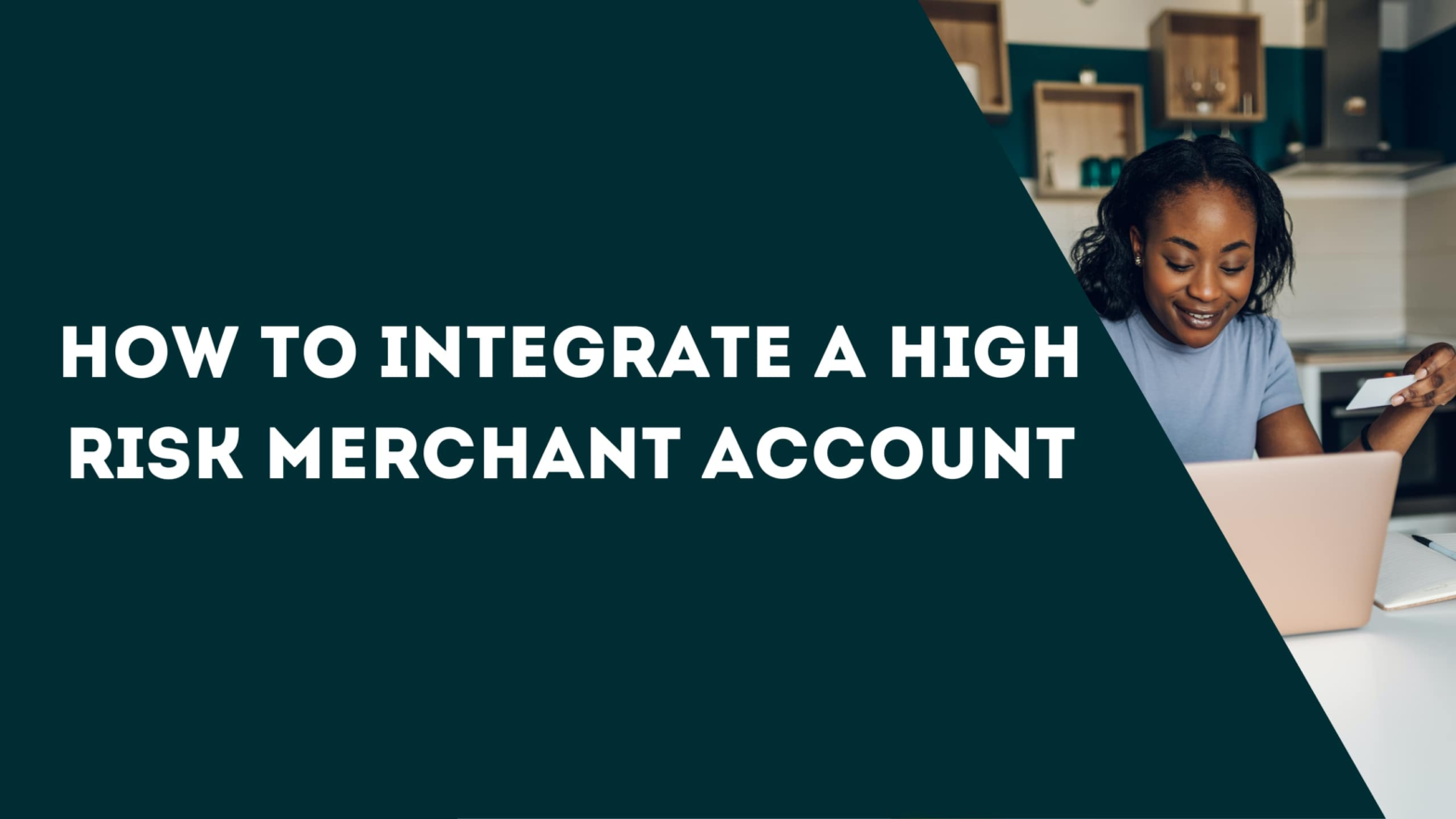Introduction
Defining High-Risk Payment Processors
High-risk payment processors are specialized financial entities that offer merchant services to businesses deemed as ‘high risk.’ These include industries and merchants facing greater challenges related to chargebacks, fraud, or regulatory scrutiny. High-risk businesses often struggle to secure merchant accounts through traditional financial institutions due to their perceived risk. These processors enable high-risk merchants to accept credit and debit cards, ensuring that businesses in elevated risk categories, like offshore companies or those with low credit scores, can operate smoothly.
Overview
This article aims to demystify the complex world of high-risk payment processing. We will explore the intricacies of a high-risk merchant account, scrutinize the unique challenges faced by businesses with elevated risk profiles, and delve into the specifics of elevated risk payment gateways. Additionally, we will discuss the integration of elevated risk payment solutions in various platforms, including WooCommerce, Shopify, and BigCommerce, highlighting the importance of robust tech support and international provider options for businesses operating in the UK, Canada, Singapore, and beyond. Our comprehensive guide will serve as an essential resource for merchants seeking the best elevated risk payment solutions to support their business needs.
Understanding High-Risk Payment Processors

What Makes a Merchant High-Risk?
A high-risk merchant account is often necessary for businesses that fall into categories deemed risky by banks and credit card processors. Several factors contribute to this classification:
Industry Type: Certain industries are inherently riskier due to their higher likelihood of chargebacks and fraud. This includes sectors like adult entertainment, e-cigarettes, and travel.
Financial Stability: Businesses with a shaky financial history, including a low credit score or a history of bankruptcy, are often categorized as elevated risk.
High Chargeback Ratios: Companies experiencing a high volume of chargebacks are flagged as high-risk merchants.
International Business Operations: Businesses dealing with international customers or operating offshore are considered elevated risk due to the increased potential for fraud and currency fluctuation risks.
Regulated Products or Services: Selling items that are heavily regulated, such as firearms or pharmaceuticals, can place a business in the high-risk category.
Common Industries Classified as High-Risk
High-risk industries often struggle to obtain traditional merchant accounts due to the perceived risk associated with their business operations. Some of these industries include:
Adult Entertainment: Due to legal complexities and reputational concerns.
E-commerce and Subscription Services: High volume of transactions and potential for fraud.
Travel and Hospitality: Prone to cancellations and chargebacks.
Gaming and Gambling: Regulatory scrutiny and high financial turnover.
CBD and Vape Products: Regulatory ambiguity and evolving legal landscape.
The Challenges Faced by High-Risk Merchants
Operating as a high-risk merchant comes with its unique set of challenges:
Higher Fees and Rates: A high-risk merchant account typically incur higher transaction fees and rolling reserves, impacting the overall profitability.
Stringent Contract Terms: These accounts often have stricter terms, including an early termination fee and longer contract durations.
Limited Choices for Payment Processors: Many traditional financial institutions and payment processing companies avoid high-risk businesses, limiting their options to specialized high-risk providers.
Risk of Account Termination: High-risk accounts are more susceptible to termination without notice due to changes in business models or increased risk.
Need for Enhanced Security: Elevated risk industries require robust security measures to protect against fraud and maintain customer trust.
Elevated risk merchants, whether operating through platforms like WooCommerce, Shopify, or BigCommerce, or dealing internationally in regions like the UK, Canada, or Singapore, must navigate these challenges with the support of dedicated high-risk payment processors. These providers offer specialized services, including credit and debit card processing, to cater to the unique needs of businesses with elevated risk profiles. Choosing the best high-risk provider involves evaluating factors like customer service, tech support, and the ability to handle international accounts, ensuring that merchants can securely and efficiently process payments and grow their businesses.
High-Risk Payment Processor Charges

Fee Structures for High-Risk Merchants
High-risk merchant accounts are typically associated with a unique fee structure, reflecting the increased risk taken on by the processors. These fees are generally higher compared to standard merchant accounts due to the elevated risk of chargebacks and fraud. Key components of this fee structure include:
Setup Fees: Some high-risk merchant account providers charge an initial setup fee to start processing payments.
Monthly Fees: A high-risk merchant account often incur monthly maintenance fees, which can vary significantly among providers.
Transaction Fees: Each transaction processed through a high-risk payment gateway may carry a higher fee compared to low-risk accounts.
Rolling Reserve: A portion of the transaction amount may be held in reserve by the processor to cover potential chargebacks and disputes.
Comparing High-Risk and Low-Risk Processing Rates
The disparity between elevated risk and low risk processing rates is notable. While low-risk merchant accounts might enjoy more favorable terms, elevated risk accounts are subject to:
Higher Transaction Rates: High-risk merchants often face a higher percentage fee per transaction.
Increased Chargeback Fees: The cost of handling chargebacks is usually higher for elevated risk accounts.
Longer Contract Terms: Elevated risk accounts may be bound by longer contract terms with stricter conditions.
For example, a low-risk merchant might pay a transaction fee of 1.5% to 2.5%, whereas a high-risk merchant could be charged anywhere from 3.5% to 5% per transaction.
Additional Costs: Chargebacks and Transaction Fees
High-risk merchants must also contend with additional costs that can impact their bottom line:
Chargeback Fees: These are fees incurred when customers dispute a charge. High-risk industries often have a higher rate of chargebacks, leading to increased fees.
Cross-Border Fees: For businesses operating internationally, like those using platforms such as Shopify or WooCommerce in the UK, Canada, or Singapore, cross-border fees can add to the cost.
Equipment and Software Costs: Depending on the payment solution providers, high-risk merchants may need to invest in specialized equipment or software for processing credit and debit cards.
Compliance and Security Costs: Maintaining compliance with international standards and investing in robust security measures to protect customer data can also add to the expenses.
High-risk merchant account providers, such as Durango Merchant Services or Soar Payments, offer tailored services to these businesses, but it’s crucial for high-risk business owners to understand the full spectrum of fees involved. While these costs are a necessary part of doing business in elevated risk industries, selecting the right payment processing provider with great customer service and support can help mitigate some of these expenses and ensure smoother financial operations.
High-Risk vs. Low-Risk Merchant Accounts

Differences in Processing, Fees, and Restrictions
Processing and Payment Gateway Differences: A high-risk merchant account often require specialized high-risk payment gateways due to the nature of their business. These gateways are equipped to handle the nuances of risk credit card processing, unlike traditional payment interface solutions used by low-risk merchants. Elevated risk accounts typically experience more stringent scrutiny during the payment processing phase, which is a necessary measure to mitigate the higher risk associated with these types of businesses.
Fee Structures: The fee landscape for high-risk merchant accounts is markedly different from that of low-risk accounts. High-risk merchants often encounter higher fees, including elevated chargeback fees and higher transaction rates. This is due to the increased risk that processors and merchant account providers undertake when servicing these accounts. In contrast, low-risk merchants benefit from more favorable fee structures, reflecting the lower risk they pose to payment processing providers.
Restrictions and Limitations: High-risk businesses are often subject to more restrictions and have fewer choices when it comes to selecting a payment provider or a merchant services provider. Providers like Durango Merchant Services and Soar Payments specialize in elevated risk accounts, offering tailored services that cater to this market segment. These restrictions can sometimes limit the flexibility high-risk merchants have in terms of payment processing options.
Impact on Business Operations and Growth
Operational Challenges: Operating a high-risk business comes with its unique set of challenges. The need to comply with stricter regulations and to work with specialized high-risk commercial support solutions can add layers of complexity to business operations. This can impact everything from the speed of setting up a merchant account to the day-to-day management of payment processing.
Growth and Expansion Prospects: The classification of a business as high-risk can also impact its growth trajectory. While high-risk merchant accounts enable these businesses to accept credit and debit cards, the higher fees and stricter regulations can eat into profit margins. However, with the right strategies and support from experienced processors and merchant account providers, these businesses can navigate these challenges effectively.
International and E-commerce Considerations: For businesses operating internationally or in the e-commerce space, the choice between high-risk and low-risk merchant accounts becomes even more crucial. High-risk accounts are often more adaptable to international transactions and can support businesses using platforms like WooCommerce, Shopify, and BigCommerce. This adaptability is essential for businesses looking to tap into global markets and leverage online sales channels.
In conclusion, while a high-risk merchant account comes with a set of challenges, including higher fees and stricter processing requirements, it is indispensable for businesses working in high-risk categories. With the right merchant services provider and payment processing strategy, these businesses can successfully manage the complexities and grow in their respective markets.
Selecting a High-Risk Payment Processor

Criteria for Choosing the Right Processor
When selecting a processor, businesses must consider several critical factors to ensure they partner with a provider that aligns with their specific needs. Key criteria include:
Industry Experience: Choose a processor with expertise in your specific high-risk industry. This ensures they understand the unique challenges and requirements of your sector.
Competitive Pricing: While high-risk merchant accounts typically incur higher fees, it’s important to compare rates and fees across different providers to find the most cost-effective option.
Flexible Contract Terms: Look for a provider offering reasonable contract terms. Avoid long-term contracts with a restrictive early termination fee, especially if your business is still scaling.
Integration Capabilities: Ensure the processor’s technology can seamlessly integrate with your existing platforms, such as WooCommerce, Shopify, or BigCommerce.
Global Transaction Support: For businesses working internationally, it’s crucial to have a payment processor that supports multiple currencies and offers cross-border payment solutions.
Evaluating Security Measures and Fraud Prevention
Security is paramount in payment processing for elevated risk profiles. Businesses should assess:
PCI Compliance: Ensure the processor adheres to the Payment Card Industry Data Security Standards (PCI DSS) for secure credit card processing.
Fraud Detection Tools: The best high-risk merchant services include advanced fraud detection and prevention tools to protect both the business and its customers.
Data Encryption: Look for processors that provide strong encryption protocols to safeguard sensitive customer data during transactions.
Importance of Customer Support and Service Reliability
Reliable customer support and service are crucial for elevated risk merchants, particularly in scenarios of technical issues or transaction disputes. Consider:
24/7 Customer Support: Access to round-the-clock support can be vital in resolving issues quickly and efficiently.
Technical Assistance: Choose a provider with a strong tech support team, capable of assisting with integration and ongoing maintenance.
Reputation and Reviews: Research the provider’s reputation in the market. Look for reviews from other businesses with elevated risk profiles to gauge the quality of their service and support.
Selecting the right payment processor is a critical decision for any high-risk business owner. It involves balancing cost-effectiveness with security, support, and the specific needs of your business, whether operating locally or internationally, online or offline. Providers like Durango Merchant Services and Soar Payments often cater to a wide range of high-risk industries, offering tailored solutions that can help businesses manage their high-risk status effectively.
Scrile: Integrating High-Risk Payment Gateways

Overview of Scrile
Scrile stands as a beacon in the high-risk business landscape, offering comprehensive solutions tailored for high-risk merchant accounts. With our extensive experience in software development and a keen understanding of the high-risk industry, Scrile is adept at providing merchant services that cater to the unique needs of businesses classified under high-risk categories.
Scrile’s Approach to High-Risk Payment Processing
Scrile’s expertise extends to facilitating payment processing for elevated risk profiles and gateways, crucial for businesses involved in credit card processing and other forms of digital payments. Here’s how Scrile makes a difference:
Diverse Payment Solutions: Scrile supports a variety of payment methods, including high-risk credit cards, enabling businesses to accept debit as well as credit cards from a wide customer base.
Robust Security Measures: Prioritizing security, Scrile implements stringent protocols for risk credit card processing, ensuring the safety of merchant and customer data.
Customizable Merchant Services: Recognizing the diverse needs of a high-risk merchant account, Scrile offers flexible solutions that can be tailored to specific business requirements.
Seamless Integration with E-commerce Platforms: Scrile’s solutions integrate effortlessly with platforms like WooCommerce, Shopify, and BigCommerce, enhancing the e-commerce experience for online merchants.
Scrile’s Role in Credit Card Processing and Merchant Accounts
Scrile’s role in the realm of high-risk merchant services is multifaceted:
Facilitating High-Risk Merchant Accounts: Scrile assists businesses in setting up merchant accounts that are equipped to handle the complexities of payment processing for elevated risk profiles.
Partnering with Payment Processors: Collaborating with different renowned processors, Scrile ensures that businesses have access to the best high-risk merchant services.
Navigating the High-Risk Industry: With its deep understanding of the high-risk industry, Scrile guides businesses through the intricacies of payment gateway selection, risk management, and compliance.
The Benefits of Partnering with Scrile for High-Risk Businesses
Businesses engaging with Scrile for their high-risk merchant accounts can expect several advantages:
Expertise in High-Risk Categories: Scrile’s proficiency in dealing with high-risk categories makes it an ideal partner for businesses facing higher risk challenges.
Comprehensive Payment Solutions: From credit card payments to advanced payment processing, Scrile offers a full spectrum of commercial support solutions.
Global Support and Integration: Catering to a global clientele, Scrile’s solutions are designed for international reach and compatibility.
Dedicated Customer Support: Scrile provides exceptional customer support, ensuring that any issues related to payment processing are swiftly addressed.
In summary, Scrile emerges as a pivotal player for businesses working in high-risk sectors. We offer specialized solutions in payment processing, high-risk merchant accounts, and commercial support solutions. Our commitment to security, customization, and global reach makes us a trusted ally for businesses navigating the complexities of high-risk industries.
Payment Gateway Solutions for High-Risk Businesses

Features of High-Risk Payment Gateways
Tailored for Higher Risk Categories: Elevated risk payment gateways are specifically designed to cater to businesses deemed high risk. These gateways are equipped to handle the complexities associated with high-risk credit card transactions, ensuring that businesses can accept credit cards seamlessly. They offer strong fraud detection and prevention mechanisms, which are crucial for businesses in high-risk categories.
Advanced Fraud Protection: One of the key features of elevated risk payment gateways is their advanced fraud protection capabilities. These systems employ sophisticated algorithms and security protocols to monitor transactions, identify potential fraud, and protect both the merchant and the customer. This level of security is essential for maintaining the integrity of high-risk merchant accounts.
Diverse Payment Options: Payment interface solutions typically support a wide range of payment options. This flexibility is vital for businesses with elevated risk profiles that need to cater to a diverse customer base, including international clients. Payment interface solutions integrate seamlessly with popular e-commerce platforms like WooCommerce, Shopify, and BigCommerce, facilitating global transactions.
Industry-Specific Gateway Solutions
Customized for Specific Industries: High-risk industries often have unique requirements, and payment interface solutions catering to these industries offer specialized solutions. For instance, a payment gateway for an online gaming business might have different features compared to one designed for a subscription-based service. These industry-specific solutions ensure that the payment processing needs of various businesses with elevated risk profiles are met effectively.
Integration with Business Systems: These payment interface solutions offer seamless integration with existing business systems. This integration capability is crucial for maintaining operational efficiency and ensuring that the payment process is smooth for both the business and its customers. Integration with a business bank account and accounting software is a standard feature, providing streamlined financial management.
Compliance and Security in High-Risk Payment Gateways
Adherence to Compliance Standards: Compliance is a critical aspect of high-risk payment processing. High-risk payment gateways adhere to international security standards like PCI DSS and ensure that sensitive payment information is secure. This compliance not only protects the business but also builds trust with customers.
Regular Security Updates: High-risk payment gateways receive regular security updates to combat emerging threats. This ongoing support and tech advancement are crucial for safeguarding against sophisticated cyber threats. Providers like Host Merchant Services and other account providers ensure that their payment interface solutions are always at the forefront of security technology.
Support and Reliability: Reliable customer support is a hallmark of the best high-risk account providers. These providers offer dedicated support to address any issues that may arise, ensuring minimal disruption to business operations. The availability of reliable technical support is a key consideration for businesses with elevated risk profiles when choosing a payment service provider.
Managing Chargebacks and Fraud

Strategies to Minimize Chargebacks
Clear Communication and Transparency: One of the most effective strategies for minimizing chargebacks in elevated risk merchant accounts is to maintain clear communication with customers. This involves providing detailed product descriptions, transparent pricing, and clear terms of service. Ensuring that customers understand what they are purchasing can significantly reduce misunderstandings and subsequent chargebacks.
Use of Detailed Invoices: Sending detailed invoices and receipts can help in reducing chargebacks. These documents should include comprehensive information about the transaction, such as the date, amount, and a description of the service or product provided. This clarity can help in resolving disputes before they escalate into chargebacks.
Efficient Customer Service: Businesses with elevated risk profiles should invest in efficient customer service. Quick and effective responses to customer inquiries and complaints can prevent many chargebacks. This approach not only reduces chargebacks but also enhances the overall customer experience, fostering loyalty and repeat business.
Tools and Technologies for Fraud Prevention
Advanced Fraud Detection Systems: Implementing advanced fraud detection systems is crucial for businesses with elevated risk profiles. These systems use sophisticated algorithms to analyze transaction patterns and flag potentially fraudulent activities. Payment processors and payment interface solutions often provide these tools as part of their services.
Secure Payment Gateways: Utilizing a secure high-risk payment gateway is essential. These gateways come equipped with various security measures such as SSL encryption, tokenization, and 3D Secure technology. These features add layers of security to each transaction, making it harder for fraudulent activities to occur.
Regular Monitoring and Auditing: Regular monitoring and auditing of transactions are vital. Businesses with elevated risk profiles should work closely with their merchant account provider to monitor transaction activities. This collaboration can help in identifying and addressing potential fraud risks promptly.
Impact of Chargebacks on High-Risk Businesses
Financial Consequences: Chargebacks can have significant financial implications for businesses with elevated risk profiles. Apart from the lost revenue from the reversed transaction, businesses also face additional fees. Frequent chargebacks can lead to higher processing fees or even the imposition of an early termination fee by the payment processor.
Reputation Damage: High chargeback ratios can damage a business’s reputation with processors and merchant account providers. This situation can lead to a business being categorized as a higher risk, which might result in more stringent contract terms or even the termination of services.
Operational Disruptions: Dealing with chargebacks can be time-consuming and disrupt day-to-day operations. Businesses with elevated risk profiles often need to allocate resources to handle disputes and chargeback investigations. This can divert attention from core business activities.
Conclusion

To sum up, navigating the complexities of high-risk payment processing requires a nuanced understanding of various factors. High-risk merchant accounts, while challenging, offer unique opportunities for businesses in the high-risk category. The integration of robust high-risk payment gateways and the strategic partnership with reliable account providers are crucial. Businesses must be mindful of potential early termination fees and the implications of using high-risk credit cards.
Looking ahead, the landscape for high-risk payment processing is evolving. More payment gateway options and innovative solutions emerge to cater to the diverse needs of businesses with elevated risk profiles. This evolution promises a more adaptable and supportive environment for these businesses to thrive.
FAQ
What is a high-risk merchant account and how does it differ from a standard merchant account?
A high-risk merchant account is a type of merchant account specifically designed for businesses considered to be at a higher risk of chargebacks or fraud. Unlike standard accounts, these often come with different fee structures and terms to mitigate the increased risk.
Why are certain businesses classified as high-risk and what impact does this have on payment processing?
Businesses are classified as high-risk due to factors like industry type, financial history, and the likelihood of chargebacks. This classification impacts payment processing by necessitating specialized high-risk payment gateways and potentially higher processing fees.
What should a business consider when choosing a high-risk payment gateway or merchant account provider?
Businesses should consider the provider’s experience with high-risk accounts, the security measures offered, compatibility with their business model, and the transparency of fees, including any early termination fees. It’s also important to assess the level of support provided by the host merchant services.
Maximizing Online Streaming and Payment Efficiencies with Advanced Integrations
- Integrating Twilio for Enhanced Communication: Dive into the world of Twilio and learn how to integrate its communication services into your platform. Understand how to use Twilio for SMS, voice, and video functionalities to enhance user interaction.
- A Comprehensive RTMP Streaming Guide: Gain insights into RTMP (Real-Time Messaging Protocol) for streaming. This guide covers the technical aspects of RTMP streaming, setup, and how to achieve high-quality live broadcasts.
- Implementing Recurring Crypto Payments: Explore the emerging world of cryptocurrency payments. This article provides a guide on setting up recurring crypto payments, ensuring a seamless and secure process for users.
These articles offer valuable resources on integrating advanced communication tools, streaming protocols, and specialized payment solutions to optimize the functionality and user experience of your digital platform.
Explore more insightful articles on our blog for further knowledge and strategies tailored to your business needs:
